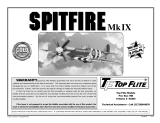
DVN-3002 Series Horizontal Tube Substructure Quick Guide Page 1 of 1
DD5147193
Rev 00
24 October 2022
201 Daktronics Drive
Brookings, SD 57006-5128
www.daktronics.com/support
800.325.8766
Refer to the contract-specic Shop Drawing for details on substructure
type.
1. Set the rst tube on the ground or prep work surface with one of the 4"
walls touching the surface. Mark the top-left corner of the tube with
“TL” to create a starting point for the panel-interference jigs (Daktronics
part number 0M-4103843). Use the jigs to ensure the screws do not land
in a KEEP-OUT zone.
a. Hand-bend the top three bracket tabs
on the jigs (if not already bent). Refer to
Figure 1.
b. Align the top-left (“TL”) corner of the tube
face with the top-left corner of the rst jig
at START.
c. Use a marker to mark the outline of the
KEEP-OUT slots and ll in the three 1/8"
vertical slots. Refer to Figure 2.
d. Place another jig to the right of the rst jig
and piece them together.
e. Remove the left jig and continue down
the tube, using as many jigs as supplied/
necessary. Refer to Figure 3.
2. Mark the wall for tube placement. Refer to
Figure 4. A horizontal line represents the
bottom of a tube, and a vertical line
represents the end of a tube or the side of a
display.
The tube will be undersized by 1/4" at each end
of the display. Refer to the contract-specic
Shop Drawing for site-specic dimensions.
Figure 1: Hand-Bend
Bracket Tabs
Hand-bend
back 90°
Figure 2: Panel-Interference Jig
START
1: 1/8" Vertical slot
2: KEEP-OUT slot
1
1
222
Figure 3: Use Jigs
Figure 4: Mark Tube
Locations
3. Find and mark the stud on the wall closest to the vertical tube edge
line along the horizontal tube line within 16" from the edge of the tube.
Continue down the horizontal tube line, marking stud locations at 32"
increments.
4. Measure the distance from the vertical tube line on the wall to the
edges of the rst stud. Use this measurement with the marked-up tube
and to mark the tube mounting locations on the tube. Continue down
the tube, marking the tube mounting locations at 32" increments.
5. Mark new tube mounting locations at 16" increments on both sides of
the stud if a stud location directly overlaps with a KEEP OUT slot. Refer to
Figure 5.
6. Drill four 0.266" (~17/64") clearance holes through
the front and rear walls of the tube at each
marked stud location. Refer to Figure 6.
7. Place the marked-up bottom tube on the wall
so the bottom horizontal line aligns with the
bottom of the tube, the vertical line aligns with
its respective edge, and “TL” is in the top-left
corner. Refer to Figure 7. Use a level (digital is
recommended) to ne-tune the tube position,
which has a ±1/4" tolerance in all directions.
8. Screw the supplied hardware into the wall as
shown on the contract-specic Shop Drawing.
Start with one screw per stud mounting
location, but do not fully tighten down.
Continue to level and add shims to make the
tube plumb and straight. When the tube is
level, plumb, and straight, add the remaining
self-drilling screws. Repeat this for all stud
locations along the bottom row of tube(s).
Figure 5: Move Studs at Interference Locations
16"
16"
Figure 6: Clearance Holes
Figure 7: Place Tube
Figure 8: Repeat Stud
Attachment Pattern
9. For all subsequent rows, repeat the stud
attachment pattern from the bottom row.
Refer to Figure 8. Verify the tube is horizontally
level and the tubes are plumb and level to
each other by a tolerance of ±1/4" in the X-axis
and by +1/4"-1/2" in the Y-axis. Y-axis tolerance
for the top tube is ±1/4" to prevent the tube
from extending above the top of the display.
10. Use a level to ensure the tube faces are plumb
to the wall and at to each other within 1/4".
Refer to Figure 9. If the tubes need Z-axis
adjustment, add shims between the wall and
the tube to adjust up to 1/2" maximum. Refer to
Figure 10. Ensure the shims bear the full height of the tube as shown in
Figure 11. Tighten down the hardware.
Figure 9: Ensure Plumb &
Flat Tube Faces
Figure 10: Shim
Figure 11: Add Shims between Wall & Tube
Shim



